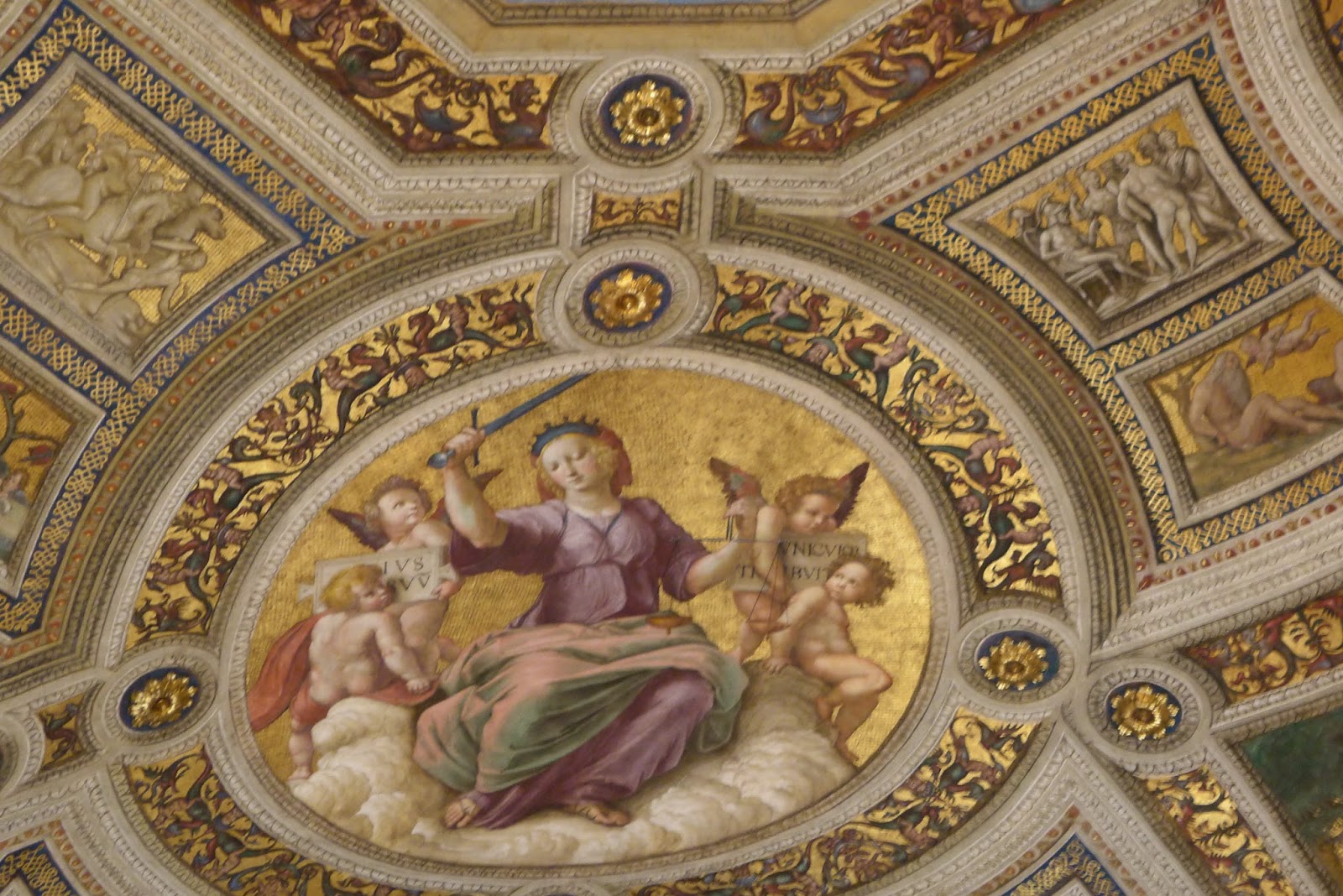I am convinced that if anyone (hypothetically) has never heard of
Christianity or Catholicism before, all they need to do is step in Italian
territory and they will be initiated in no time. The themes of Catholicism and religion are so
pervasive and entrenched in Italian architecture, art, and history that not
only would it be difficult to ignore, but it would be impossible. We observed in traveling in Rome and then northward, no matter how
small and sleepy a town is, there would always be a gargantuan church in the
center, some of them, lavishly and impressively decorated. In Rome, I do not remember a
single turn without running to a duomo (cathedral),
a chiesa (church), an altar, or other
symbolism attached to the church.
The time of the great Roman Empire was a period of paganism
where people worshiped Greco-Roman pagan gods, and ultimately, the emperor, who is a self-imposed
god. In fact, some of the more ancient
structures still existing today such as the Pantheon in Rome (and the beautiful
Santo Stefano in Bologna) started as pagan temples that were later on converted
to churches. Christianity emerged in
year 1 AD and there was tremendous resistance to it, so much so that heads of
die-hards who converted to Christianity rolled.
We know them today as martyrs or saints.
Emperor Constantine I was the first Roman emperor who embraced
Christianity and made it the official religion of the Roman Empire in
380 AD. The Roman Empire collapsed about a hundred years later and the Church filled the power vacuum that was left. In the 14th century, Italy was finally emerging from the Dark Ages. The Renaissance, the great cultural rebirth,
was forcefully awakening in Florence in the 14th century and papal control was fortified during this period.
I feel I have to write this long preface
because all the art in the Vatican Museum – and in most other great Italian
museums – are anchored in religion.
Don’t expect themes from everyday life, portraiture, or much else,
because other than snippets of mythology or history, Renaissance art is about
religion - just how the Church wanted it. There won’t be a shortage of
scenes from the Old Testament, of the life of Jesus, of prophets and saints, of
the last judgment, not just in the Vatican Museum but in other major museums
and churches. The papal states had to
have a propaganda of fear to control believers.
It amassed wealth in exchange of the wealthy buying off their sins and a spot in Heaven. And the Vatican, being the political and
spiritual center of the Catholic faith, is a treasure trove of the most
precious and expensive of Renaissance art.
 |
| This is a copy of Michelangelo's "Pieta". It is an opportunity to study the details of this masterpiece without the crowds. |
 |
| Transfiguration by Raphael |
 |
| Madonna of Foligno by Raphael |
 |
| A tapestry of The Last Supper taken from the work of Leonardo da Vinci |
 |
| Leonardo's unfinished painting of St. Jerome |
My favorite painting at the Pinacoteca, however, was not by Michelangelo, Raphael or Leonardo. It is the Deposition from the Cross by Caravaggio, known as the maverick of his time. For this one, I literally had to sit in awe, mirroring the old lady next to me who has been sitting on the bench, transfixed, when we got there. The use of light and contrast, how the light strikes and illuminates Christ's body being taken down from the cross is so masterful. The realism was just stunning.
Raphael was commissioned to paint the walls and ceilings of four rooms at the Vatican Museum. They were originally used by the popes either as a residence, study, office and such. It was beautiful, yes, but I cannot overlook how lavish and opulent these were. It was an indication of how much power and money (corruption and greed?) were flowing in the Church during that time.
Sistine Chapel
IF YOU GO:
1. Whatever you do, make online reservations weeks in advance to bypass the lines. It is so easy and it baffles me why people would/do not do it. The day of our visit, there was a long line snaking around the perimeter of the museum. People we met traveling who stood on that line said that wait times were about two hours. In contrast, if you make online reservations, you zip right through with zero lines. You can also opt to pay for guided tours. Options available here. For an extraordinary experience (and perhaps a quieter visit), try to catch the Vatican Museum when they're open at night on select dates. Click here for more information.
2. Remember that The Vatican is the world capital of Catholicism. If there is one place where modest dress is upheld, this is it. Dress appropriately and cover up. Bare shoulders and bare legs would most likely deny you entry. No skirts or shorts above the knee. 3. If you have a small lightweight pair of binoculars, it wouldn't hurt to stash them in your pack. These would come in handy at the Sistine Chapel. You could really study the details on the ceiling if you could get close ups.
4. Rent an audio guide. This museum (as with any museum) is best navigated with some contextual information. You can also download free audio guides from iTunes. I had an old, neglected iPod lying around that I put to good use on this trip. I used Rick Steve's free audio guide to the Sistine Chapel downloadable here.
5. The Vatican is its own country and their stamps are coveted. Carve a few minutes to write a couple postcards and mail them right at the museum!










No comments:
Post a Comment